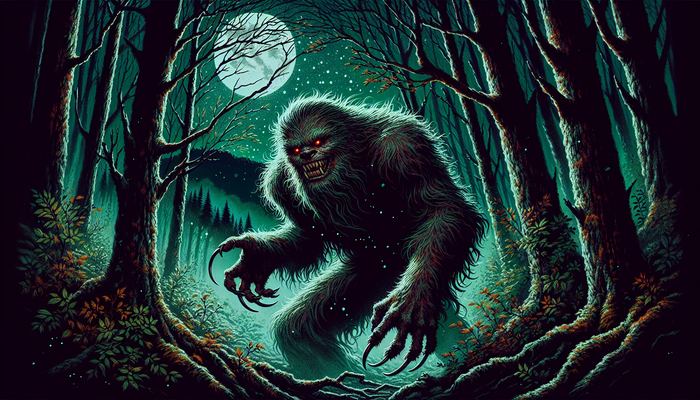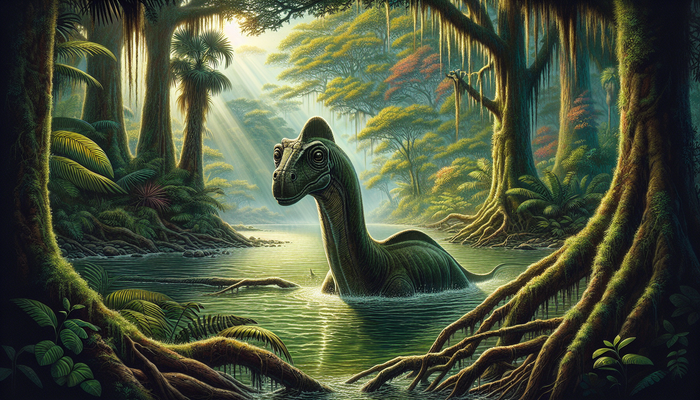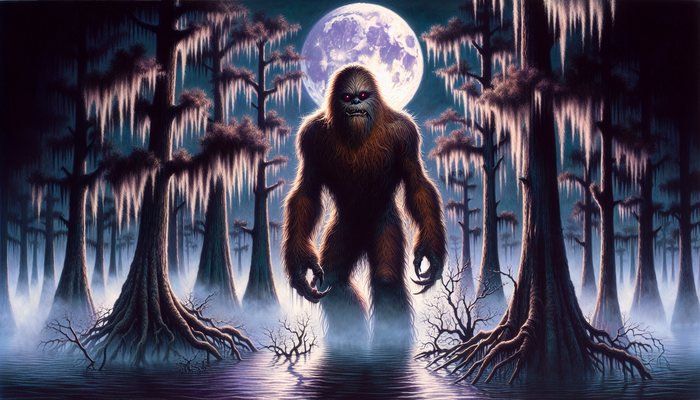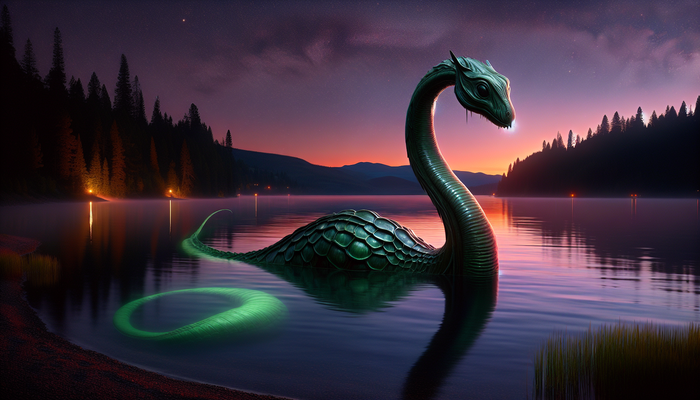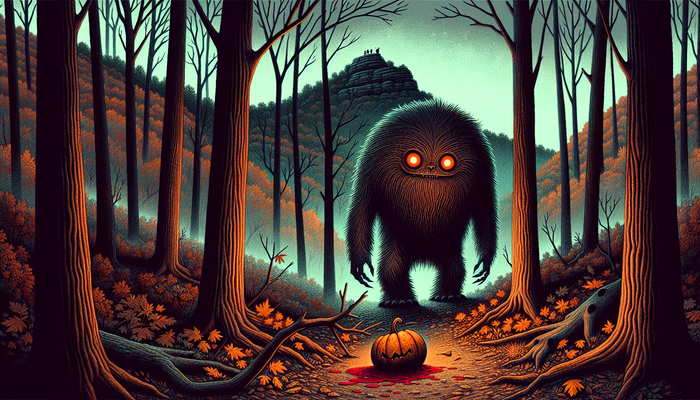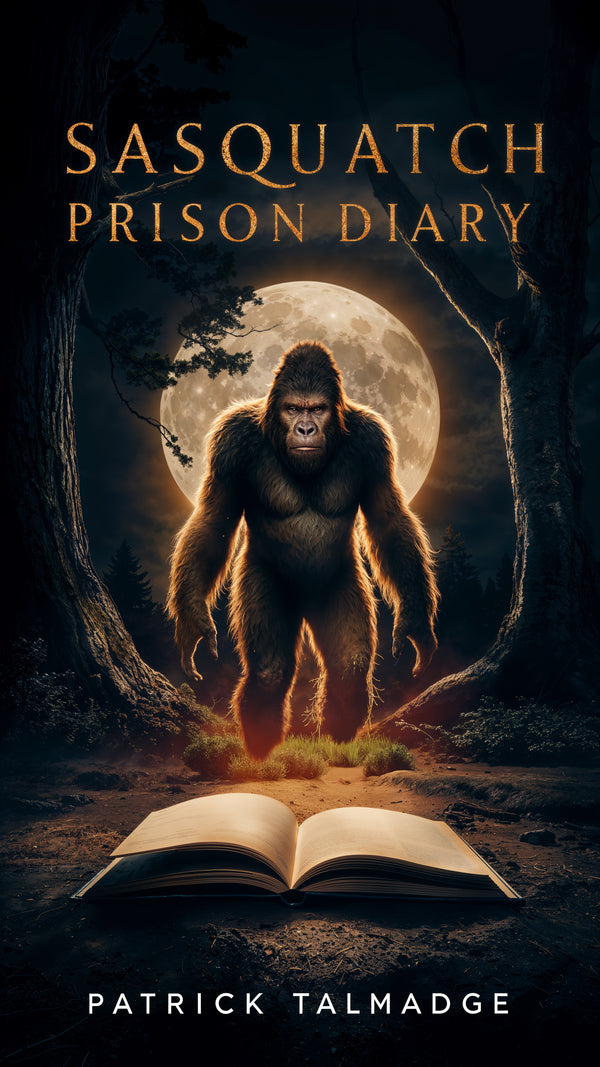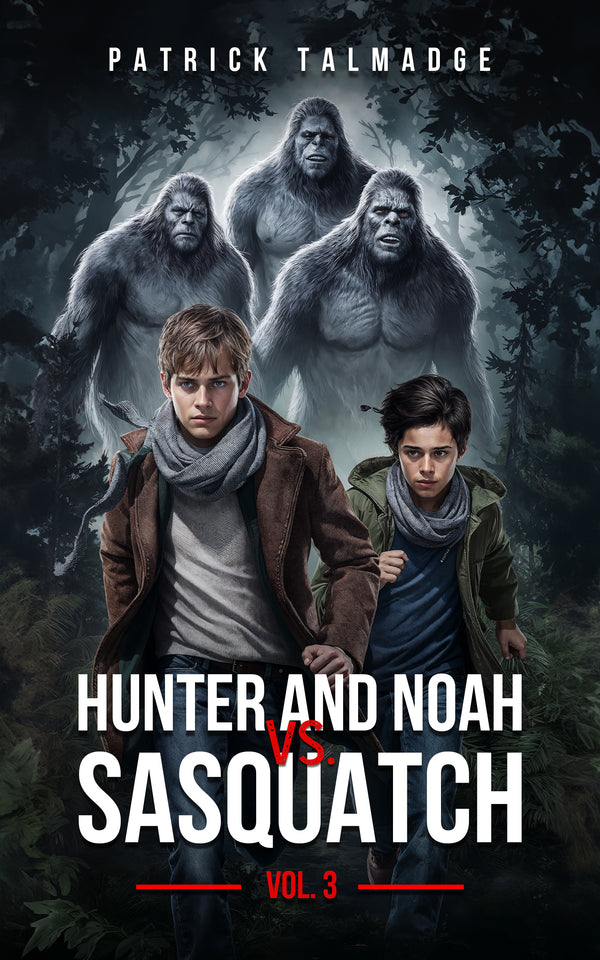Hawaiian Monsters: Shapeshifters, Spirits, and Guardians of the Islands
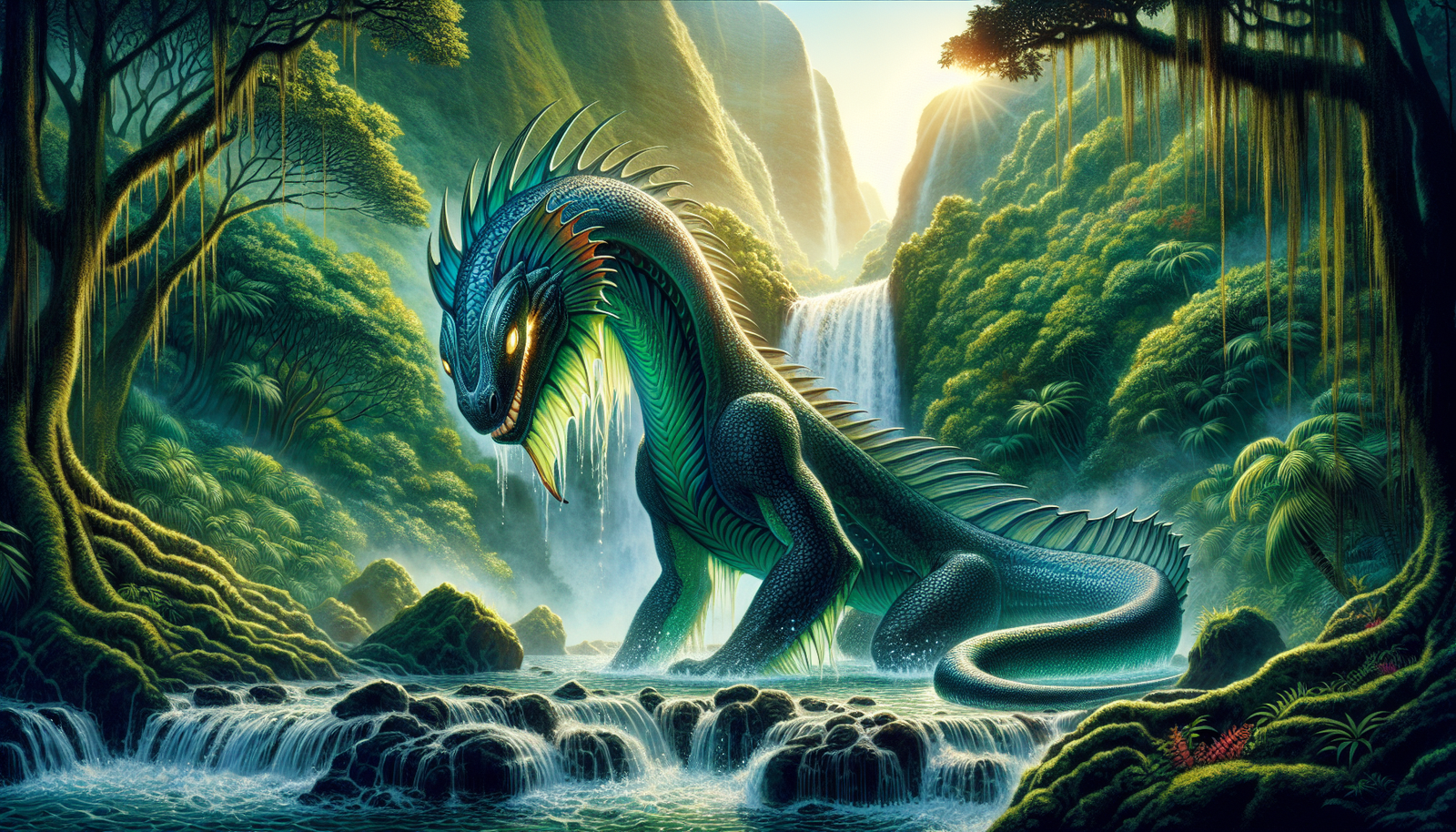
By Wade Beaumont, Cryptozoologist
Aloha, folks! Wade Beaumont here, coming at you with a deep dive into the enchanting and sometimes downright spine-chilling world of Hawaiian monsters. Now, I know what you might be thinking - monsters in paradise? Surely the land of swaying palms, crystal blue waters, and Hawaiian sunrises can't be home to anything too terrifying, right? Well, let me tell you, the legends of Hawaii's mythical creatures are as rich, complex, and occasionally hair-raising as the islands themselves.
You see, these monsters - or perhaps more accurately, these shapeshifting spirits, demigods, and guardians - are far more than just spooky campfire tales. They're living, breathing embodiments of Hawaii's ancient culture, complex history, and profound spiritual beliefs. From the fierce mo'o (lizard-like water spirits) to the mischievous Menehune (forest-dwelling craftsmen), Hawaiian mythology is populated by beings that defy easy categorization, blurring the lines between human, animal, and divine.
As a lifelong adventurer with a deep respect for indigenous wisdom, I've always been fascinated by the way folklore can reveal fundamental truths about a people's relationship with their environment. And let me tell you, when it comes to understanding the Hawaiian worldview, you can't do much better than studying their monsters. These legends speak volumes about the reverence Hawaiians have for the natural world, their belief in the power of transformation, and the importance of maintaining a harmonious balance between the physical and spiritual realms.
So, what do you say we saddle up and embark on a journey through the misty valleys, lush rainforests, and hidden caves of Hawaii's mythological landscape? Along the way, we'll encounter some of the most iconic, intriguing, and sometimes downright intimidating monsters in Hawaiian lore. We'll explore their origins, unpack their symbolic meanings, and even investigate how these ancient legends continue to shape Hawaiian identity in the modern era.
Now, I won't lie to you - some of these tales might send a shiver down your spine. But fear not, because like any good adventure, the thrill is all part of the experience. And trust me, by the time we're done, you'll have a newfound appreciation for the depth, complexity, and sheer storytelling prowess of Hawaiian mythology.
So grab your hiking boots, your sense of wonder, and maybe a protective charm or two (just in case), and let's dive into the mesmerizing world of Hawaiian monsters. Mahalo for joining me on this wild ride - I promise, it's going to be one heck of a journey!
The Mo'o: Shapeshifting Water Dragons
First up on our monster-filled itinerary are the mo'o - those shapeshifting, water-dwelling dragons that have been giving Hawaiians goosebumps for centuries. Now, when I say "dragon," I don't want you picturing some Tolkien-esque, fire-breathing behemoth. No, the mo'o are a bit more subtle than that, but no less formidable.
Picture this: you're hiking through a lush Hawaiian valley, the sound of a cascading waterfall growing louder with each step. As you approach the misty pool at the base of the falls, you spot what appears to be a beautiful woman bathing in the crystal-clear waters. Enchanted, you draw closer, only to recoil in horror as the woman's form shimmers and shifts, revealing a massive, lizard-like creature with glinting scales and razor-sharp teeth.
Congratulations, you've just had a run-in with a mo'o.
You see, these crafty spirits are known for their ability to take on human form, often appearing as alluring women to unsuspecting men. But don't let their beauty fool you - the mo'o are fiercely territorial, and they take their job as guardians of Hawaii's freshwater sources very seriously.
In fact, many of Hawaii's most famous legends revolve around the battles between the mo'o and the volcano goddess Pele and her family. Take, for instance, the epic tale of Pele's sister Hi'iaka and her journey to rescue Pele's mortal lover, Lohi'au, from the clutches of some particularly nasty mo'o.
As Hi'iaka traverses the islands, she encounters a whole host of these water dragons, each more cunning and dangerous than the last. There's Kiki-pua, who conjures up an illusory bridge over a treacherous ravine, only for Hi'iaka to realize - just in the nick of time - that the bridge is actually the mo'o's tongue. Talk about a close call!
Then there's Maka-ukiu with his massive, tooth-filled maw; Pili and Noho, who disguise themselves as harmless logs in a river; and the mighty Mo'o-lau, whose powerful jaws can crush a canoe in two. It's only through her wits, courage, and some serious supernatural mojo that Hi'iaka is able to defeat these monsters and rescue her sister's beloved.
Now, here's where things get really interesting. Despite the prominence of mo'o in Hawaiian mythology, there's no physical evidence that giant lizards ever actually inhabited the islands. So what gives? Well, some scholars believe that the mo'o legends might be a kind of cultural memory, a holdover from the days when ancient Polynesians encountered fearsome creatures like crocodiles and monitor lizards in their ancestral homelands.
Others interpret the mo'o in a more metaphorical light, seeing them as embodiments of the raw, untamable power of nature itself. After all, water is the source of all life, but it can also be incredibly destructive, capable of wiping out entire villages with a single, massive wave. In this sense, the mo'o can be understood as representing the dual nature of the natural world - both nurturing and dangerous, life-giving and life-taking.
Regardless of their origins, one thing is clear: the mo'o have left an indelible mark on the Hawaiian psyche. Even today, many Hawaiians regard freshwater sources as sacred sites, places to be treated with the utmost respect and reverence. And who can blame them? With shapeshifting dragon spirits lurking beneath the surface, it pays to mind your manners and watch your step!
Kamapua'a: The Pig-Man Demigod
Next up on our monster tour is a figure who's half man, half pig, and 100% trouble. I'm talking about none other than Kamapua'a, the shapeshifting demigod who's been giving Pele, the volcano goddess, a run for her money for centuries.
Now, I know what you're thinking - a pig-man? Really? But trust me, Kamapua'a is no ordinary oinker. This guy is a force to be reckoned with, a trickster figure par excellence who's known for his quick wit, his insatiable appetites (both culinary and carnal), and his uncanny ability to wriggle out of even the tightest of spots.
Legend has it that Kamapua'a was born to a mortal mother and a divine father, the product of a scandalous liaison between a high-ranking chiefess and the god of wild boars. From the moment he burst forth from his mother's womb (in the form of a squealing piglet, no less), Kamapua'a was marked for greatness - and for mischief.
As he grew into a strapping young demigod, Kamapua'a developed a reputation as a fierce warrior, a cunning strategist, and an incorrigible ladies' man. But his most famous exploits revolve around his tempestuous relationship with none other than Pele herself.
You see, Kamapua'a and Pele had a bit of a love-hate thing going on. Some stories depict them as passionate lovers, their fiery union mirroring the explosive power of the volcanoes that dot the Hawaiian landscape. Other tales cast them as bitter rivals, locked in an eternal struggle for dominance over the islands.
In one particularly epic showdown, Pele chases Kamapua'a across the length and breadth of Hawaii, hurling molten lava and fiery rocks at the fleeing pig-man. But Kamapua'a is no easy target - he shifts forms at will, transforming into a fish to escape Pele's wrath, then a plant to avoid her detection, and finally a massive boulder to withstand her onslaught.
Their battle rages on for days, carving deep gullies into the earth, creating new steam vents and lava tubes, and ultimately reshaping the very landscape of the islands. It's said that the rugged terrain of Hawaii's volcanoes bears the scars of their titanic struggle to this day.
But here's the thing about Kamapua'a - he's not just a fighter, he's also a lover. In fact, some legends suggest that his dalliances with Pele were less about rivalry and more about romance. The two are said to have engaged in a passionate affair, their coupling as fiery and tempestuous as the lava flows that surge beneath the earth's surface.
In this light, Kamapua'a can be seen as a kind of counterbalance to Pele's destructive power. Where she represents the raw, untamed energy of the volcanoes, he embodies the fertile, life-giving force of the land itself. His presence is a reminder that even in the face of nature's fury, there is always the potential for renewal, regeneration, and growth.
It's no wonder, then, that Kamapua'a continues to be celebrated in Hawaiian culture to this day. His image can be found in countless works of art, from ancient petroglyphs to modern murals, and his name is invoked in chants and hula dances that honor the enduring power of the natural world.
So the next time you're hiking through a lush Hawaiian forest and you hear a strange rustling in the underbrush, don't be too quick to dismiss it as just the wind. It might just be Kamapua'a, the pig-man demigod, off on another one of his wild adventures. And who knows? If you're lucky (or unlucky) enough, you might just get caught up in one of his epic battles with Pele - just be sure to bring your running shoes and your sense of humor, because with Kamapua'a, you never quite know what's going to happen next!
Hawaiian Shark Gods and 'Aumakua
Alright, folks, it's time to dive into the deep end of Hawaiian mythology and take a closer look at some of the most fascinating, and sometimes downright terrifying, creatures in the islands' legendary bestiary - the sharks.
Now, I know what you're thinking - sharks are pretty scary as it is, what with their razor-sharp teeth, beady eyes, and uncanny ability to sense a single drop of blood in the water from miles away. But in Hawaiian culture, these sleek predators aren't just objects of fear - they're also revered as divine beings, powerful ancestors, and even protective spirits.
You see, in traditional Hawaiian belief, sharks weren't just another type of animal - they were 'aumakua, or family gods. Many Hawaiian families traced their lineage back to a particular shark ancestor, who would serve as their guardian spirit and protector. These shark 'aumakua were believed to have the power to guide their descendants through life's challenges, providing them with strength, wisdom, and even supernatural abilities.
One of the most famous shark 'aumakua was Kamohoali'i, the brother of the volcano goddess Pele. Kamohoali'i was said to have the ability to take the form of any fish in the sea, but he was particularly fond of appearing as a massive, terrifying great white shark. As the guardian of the Hawaiian Islands, Kamohoali'i was believed to patrol the waters surrounding the archipelago, using his immense power to protect the land and its people from harm.
But not all shark spirits were quite so benevolent. In fact, Hawaiian mythology is full of tales of shapeshifting shark-men who used their powers for decidedly more nefarious purposes. These creatures were said to be able to take on human form, walking among mortals and luring unsuspecting victims into the water with their charm and beauty.
One of the most famous of these shark-men was Nanaue, the son of a human mother and a shark-god father. Nanaue was born with a strange deformity - a small, circular mouth on his back that resembled a shark's jaws. As he grew older, Nanaue discovered that he had inherited his father's shapeshifting abilities, and he began to use them to satisfy his insatiable hunger for human flesh.
According to legend, Nanaue would transform into a handsome young man and walk among the villages of Hawaii, befriending the locals and earning their trust. Then, when the moment was right, he would lure his unsuspecting victims into the water, where he would reveal his true form and drag them down to a watery grave.
For years, Nanaue terrorized the people of Hawaii, evading capture and leaving a trail of blood and tears in his wake. It wasn't until a clever kahuna (priest) finally discovered the secret of Nanaue's power that the shark-man was finally defeated. The kahuna placed a special lei around Nanaue's neck, which prevented him from transforming back into his human form. Trapped in his shark body, Nanaue was driven out to sea, never to be seen again.
But the legend of Nanaue and other shapeshifting shark-men like him has endured in Hawaiian culture, serving as a reminder of the dangers that lurk beneath the surface of even the most placid-seeming waters. To this day, many Hawaiians regard sharks with a mix of reverence and caution, respecting their power as divine beings while also recognizing their potential for destruction.
Interestingly, the belief in shark 'aumakua and shapeshifting shark-men isn't unique to Hawaii - similar legends can be found throughout Polynesia, from Tahiti to New Zealand. Some scholars believe that these stories may have originated with the region's earliest settlers, who brought with them a deep respect for the ocean and its creatures.
Others see the shark legends as a way of encoding important cultural values and lessons. The stories of benevolent shark 'aumakua, for example, might be seen as a way of reinforcing the importance of family ties and ancestral wisdom, while the tales of murderous shark-men serve as a warning against the dangers of greed, deception, and unchecked appetite.
Regardless of their origins or deeper meanings, there's no denying the power and enduring fascination of Hawaii's shark mythology. Whether you're a skeptic or a true believer, it's hard not to feel a shiver down your spine when you imagine the sleek, shadowy form of a massive shark cutting through the waters off the Hawaiian coast.
So the next time you find yourself swimming in the warm, crystal-clear waters of the Pacific, take a moment to remember the legends of the shark gods and their shapeshifting kin. And if you happen to spot a fin cutting through the waves in the distance, well... just hope that it's Kamohoali'i out for a leisurely swim, and not Nanaue looking for his next meal!
From Bigfoot to UFOs: Hangar 1 Publishing Has You Covered!
Explore Untold Stories: Venture into the world of UFOs, cryptids, Bigfoot, and beyond. Every story is a journey into the extraordinary.
Immersive Book Technology: Experience real videos, sights, and sounds within our books. Its not just reading; its an adventure.



